The 16 Best Road Bike Tires in 2019
Picking the right tires can be hard because there are so many of them out there. There are so many different tire brands, sizes, rubber compounds. And to make things even more complicated, there are tires for different occasions.
You’re probably be wondering things like;
- Which is the best all-rounder tire for everyday use?
- How long will they last me?
- Do they have good puncture protection?
As cyclists ourselves, we’ve been through this process many times. So, to make things easier for you, we’re sharing with you some of our favorite ones in the market today.
A Quick Glance : Our Road Bike Tires Picks
Best Value : Vittoria Rubino G2
“A great all-rounder option for everyday riding and training miles.”
Best for Racing : Vittoria Corsa G2
“Supple and fast tire. The go-to tire for a lot of professional cycling teams.”
Best Puncture Resistance : Continental GP 4 Season
“Top-notch puncture protection with 2 layers of Continental’s Vectran inserts.”
Best for Daily Commuters : Schwalbe Marathon Plus
“The go-to tire for daily commuters in all weather conditions.”
How We Pick Road Bike Tires
If you look around, you will quickly realize that there are a lot of options out there these days. In order to cut through the noise and pick the truly good ones, we asked around in our local bunch rides, researched online forums and large online retailers such as Amazon, Competitive Cyclist, and Wiggle to get a general consensus.
We also bought a few models such as the Vittoria Corsa G2.0, Continental Grand Prix 5000, and Schwalbe One Pro to get the first-hand experience on our picks.
We paid attention to five objective criteria below :
- Clincher tires. The majority of road cyclists are still running on clinchers, although tubeless adoption are quickly picking up. Even the pros use clinchers while out in training. So it makes perfect sense that we picked only clinchers. Head here if you’re after tubeless tires recommendations.
- 25c or 28c wide. Our picks are generally available in either 25c or 28c as that’s the most common tire size. Older bikes use 23c and newer bikes from 2020 onwards are usually using 28c.
- Value for money tires is aimed towards everyday use as we think they have the ideal balance between price vs durability.
- Racing tires have very low rolling resistance but below average puncture protection. Ideally, you only want to use them during race days. These don’t come cheap nor last very long.
- Excellent puncture protection tires have an extra protection belt under the tire thread for harsh and rough road surfaces.
- Commuting tires are durable, last longer, and also have very good puncture protection qualities.
You can read more in our road bike tires buying guide here.
Value for Money Picks
Vittoria Rubino Pro G2
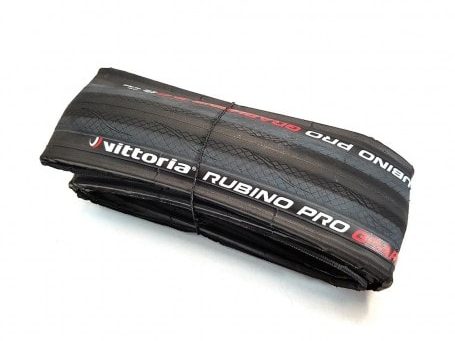
If you want great performance out of a tire but don’t want to shell out a lot of money, check out Vittoria’s Rubino Pro Control G2.
While this is a step down from Vittoria’s highly regarded competition tires, such as the Corsa G2, it’s a great option for all-rounder road riding. It features Vittoria’s graphene technology, which significantly reduces punctures.
And while you may not be throwing your bike into corners on this tire, at 120 TPI, the Vittoria Rubino G2 will still give you a comfortable ride with some nice performance qualities, making it a great value for its price point.
- Pros : Expect to get many miles.
- Cons : Actual width measures wider than published.
Schwalbe Durano
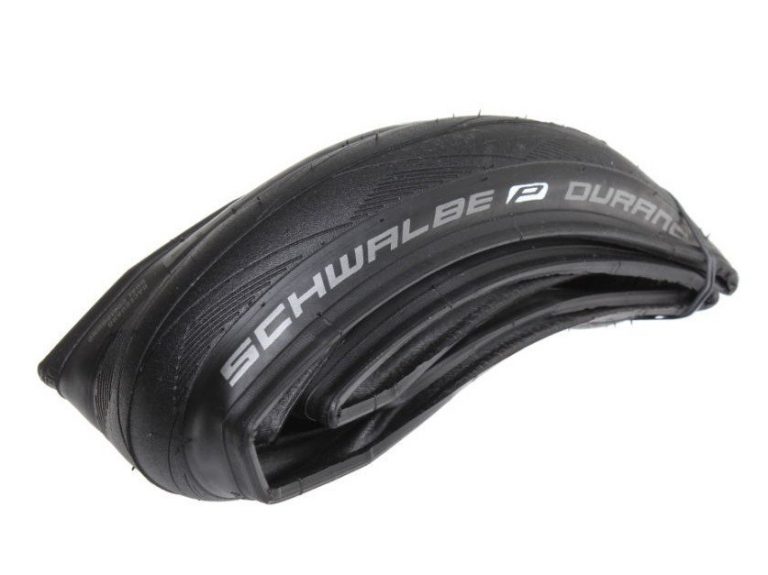
The Schwalbe Durano sits a level down from its race tires lineup, making it great for everyday riding. They’re designed with durability, grip, and puncture protection in mind and aimed towards cyclists with high mileage. They typically last at least 6,000km/3,700mi before showing signs of wear.
Over the years, the Schwalbe Durano has definitely lived up to its nickname, the miles eater. They’ve been around since 2012 and have gone through several updates to make it even better.
There’s a double layer of Nylon fabric right below the rubber compound that ensures you’re well protected from cuts and punctures.
- Pros : Available in 4 sizes, 23C, 25C, 28C, and 32C.
- Cons : Higher rolling resistance due to the durable rubber compound used.
Michelin Pro4 Endurance
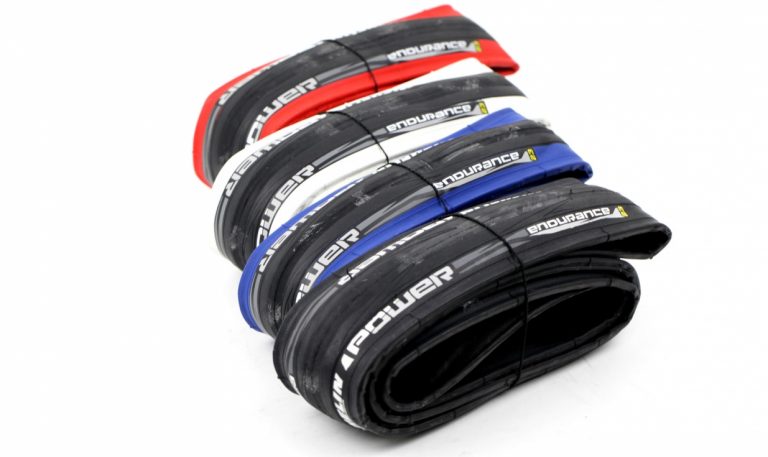
With the release of the Power lineup, the company replaces and improves its old Pro4 lineup. Just as the Pro4 line did, the Power line focuses on four varieties: Competition, Endurance, All-Season, and Protection. The Michelin Endurance line is geared towards, as one might guess from the name, puncture resistance, and durability.
The tire uses Michelin’s patented X-Mile rubber compound to take on inhospitable road conditions. Michelin says the new Endurance improves the puncture resistance and grip over the older version without sacrificing speed.
Except for the Power Competition tires, the Michelin Power Endurance is the fastest tire in the Power line.
- Pros : Low rolling resistance for an endurance tire.
- Cons : Black color version might be hard to come by.
Low Rolling Resistance Picks
Vittoria Corsa G2
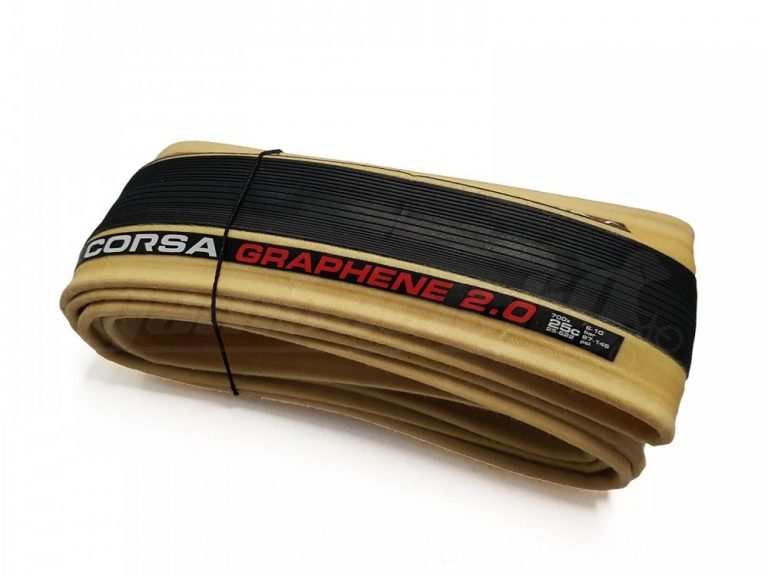
The Corsa has long been a popular choice for competitive riders. Vittoria touts the Corsa is ridden by pros in all three grand tours as well as the Classics and World Championships.
One of the reasons why is the mix of durability and performance it offers. At a very supple 320 TPI, you can feel comfortable about the tires gripping the pavement when you take those corners hard.
As with its entire lineup, Vittoria’s patented graphene technology is applied to Corsa, incorporating four different graphene compounds, making it both supple enough to handle racing yet firm enough to offer low resistance.
These qualities make the Vittoria Corsa G2 a must-have for competitive cyclists.
- Pros : Very supple, fast, and comfortable ride feel.
- Cons : Tan wall colors only available for clincher versions.
Continental Grand Prix GP5000
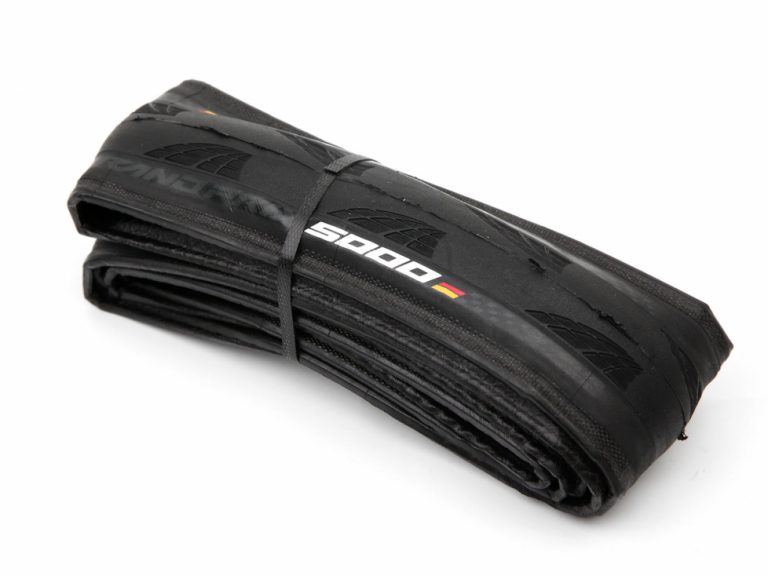
The Continental Grand Prix 5000 is a long-awaited replacement for arguably the most popular tire in the last 5 years, the Grand Prix 4000 S2.
Continental claims that it has 12% lower rolling resistance and 20% better puncture protection than its predecessor, making it fast and reliable. However, it’s only been not long ago since its launch, so the jury is still out over its performance.
Better still, it comes with a tubeless version with even better performance over its clincher sibling. The tubeless version of the Continental GP5000 has 5% lower rolling resistance and 5% better puncture resistance.
- Pros : The best of both worlds for low rolling resistance vs puncture protection.
- Cons : Tubeless installation can be tricky especially for beginners.
Pirelli P Zero Race
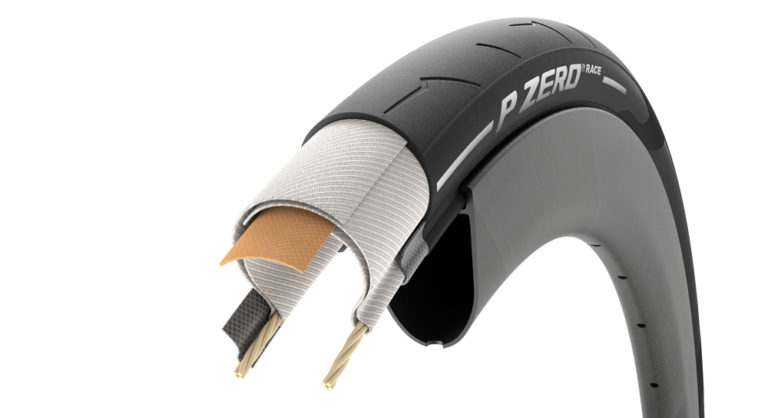
Pirelli actually has a long history in road cycling, dating back to the first Giro d’Italia in 1909. Back then, 30 of the 49 cyclists who took part rode Pirelli tires. Even 5-times Giro d’Italia winner Fausto Coppi rode the Pirelli’s during his peak.
Bu in recent years, Pirelli is not a brand name that is synonymous with cycling. They made a comeback in 2017 when the Pirelli P Zero Velo was announced.
Leveraging their car and motorbike racing experience, the Pirelli P Zero Race is their top of the line road racing tires. Pirelli uses their proprietary SmartNet rubber compound which is also used in Formula 1 to develop a bike tire with very low rolling resistance and supple feel.
The Pirelli P Zero Race is available in 26C, 28C, and 30C.
- Pros : Rubber compound is very grippy especially in the wet.
- Cons : Expect to pay a premium over the other models.
S-Works Turbo Cotton
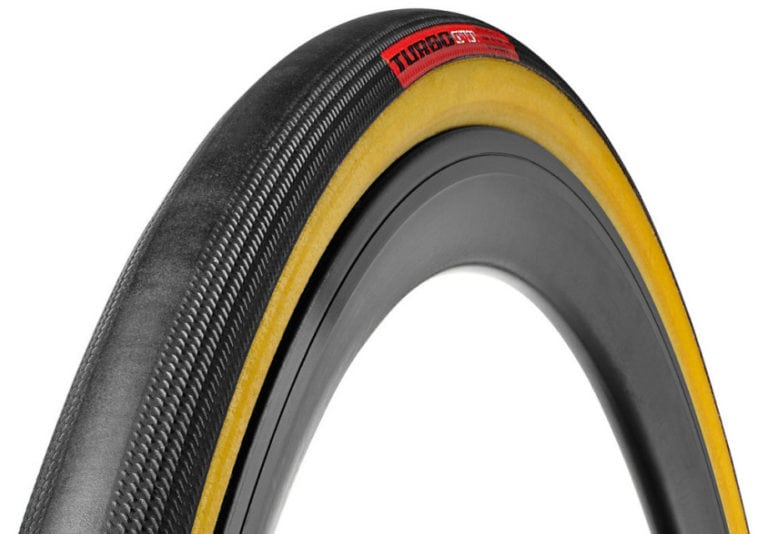
The S-Works Turbo Cotton has been Specialized’s best-selling clincher tires for a few years now. They’re well-known for being very fast which is one of the reasons why Specialized sponsored the pro teams such as Deceuninck-Quick Step and Bora Hansgrohe race on them.
With a 320 TPI cotton casing, it’s among a handful of clincher tires (besides Vittoria and Veloflex) that are very supple. Pair these with a latex inner tube and you’ll get a ride quality similar to a tubular tire.
These won’t last more than 3,000km. So save them for your race days.
- Pros : Supple and very low rolling resistance.
- Cons : Wears out quickly.
Excellent Puncture Protection Picks
Continental GP 4 Season
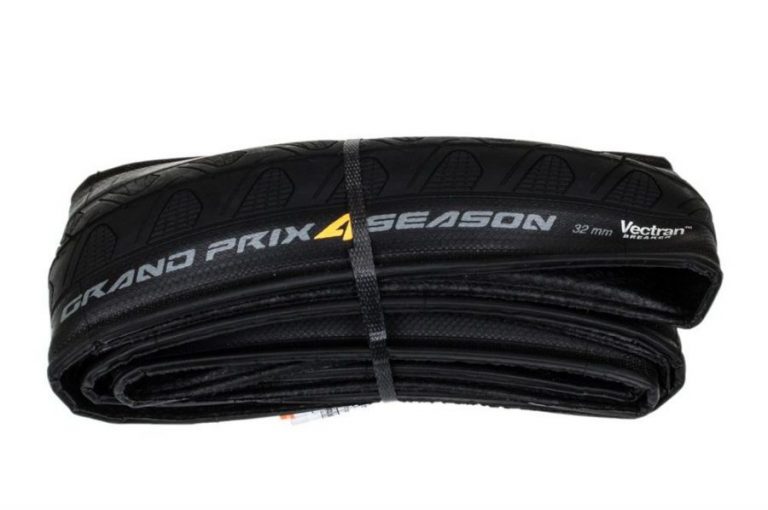
The Continental Grand Prix 4 Season is every road cyclist’s choice for durable road tires. It’s sometimes referred to as the beefier version of the popular Continental GP4000 S2.
As the name implies, it’s ideal for all 4 seasons and makes a good and reliable pair of training tires. Puncture protection is top-notch with 2 layers of Continental’s Vectran inserts. The sidewalls are also reinforced with a layer of durable DuraSkin, which reduces the chances of getting a sidewall cut.
DuraSkin is a high-quality polyamide fabric that will stand up to the worst road conditions. Vectran is a liquid-crystalline polymer that has an extremely high tear resistance while still being lightweight.
The Continental GP 4 Season is available in 4 sizes, from 23C, 25C, 28C, and 32C.
- Pros : Very durable and will last you miles.
- Cons : Stocks can be hard to come by especially for larger sizes.
Continental Gator Hardshell Duraskin
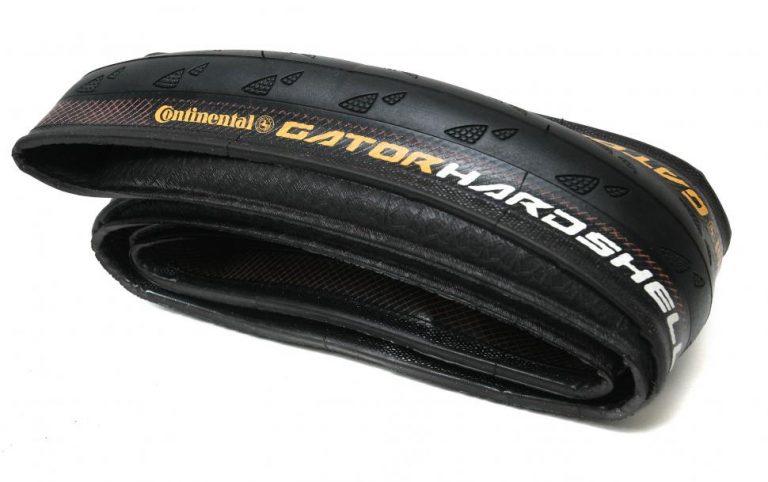
If you commute to work right after a weekday morning bunch ride, this is the ideal set of tires. It’s well known for its puncture protection properties and high mileage while still having a relatively low rolling resistance. At 180 TPI, it’s still supple enough with 3 layers of polyester under the tire threads protecting you against punctures.
The Continental Gator Hardshell weighs only 240g for a 25C, and a 28C weighs 300g. It’s also available in MTB and 650c versions to suit a wider range of bikes.
- Pros : The go-to tire among many cyclists for the winter.
- Cons : Heavier due to the extra layers for puncture protection.
Michelin Power All Season
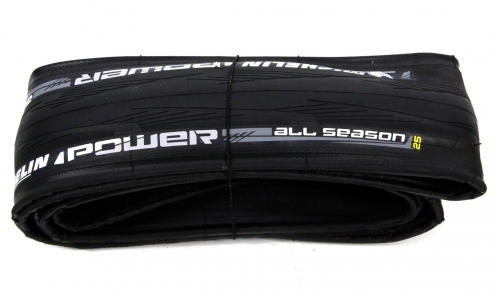
Michelin is another well-known name when it comes to tires. The French manufacturer has been in business for more than 125 years, making tires for all types of vehicles.
The All Season sits in the Power lineup. They’re an ideal choice if you live in an area where the weather is less than cooperative. They’re designed to be robust, have longer durability, and have excellent cornering grip well in the wet.
The Hi-Grip design tread pattern provides 15% more grip on wet surfaces over the regular Power Competition and Endurance tires.
The Michelin Power All Season is available in 23C, 25C, and 28C sizes.
- Pros : Excellent grip in the wet.
- Cons : Available in clincher only.
Vittoria Corsa Control G2
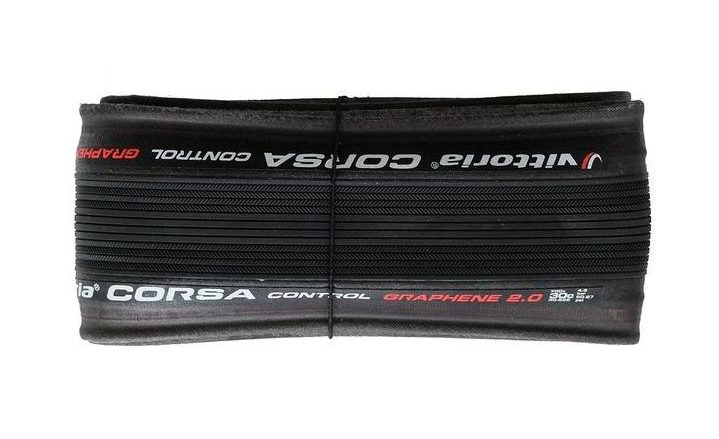
Vittoria designs its tires with pro riders in mind, and the Corsa Control G2 is a great example of that.
This tire is designed to withstand the punishment of cobblestones, pave, gravel, and other rough road environments that the pros face from time to time (it was by the winner of the notorious Strade Bianche with its white gravel roads in 2018).
The Vittoria Corsa Control G2 resists punctures when exposed to this tough terrain while at the same time maintaining a high level of racing performance. It features thicker tread than its Corsa cousins while still incorporating the same Vittoria graphene technology that gives this tire high rolling and gripping qualities.
- Pros : Available in both clincher and tubeless versions.
- Cons : Don’t last long especially if ridden a lot over rough terrains.
Picks for Commuters
Schwalbe Marathon Plus
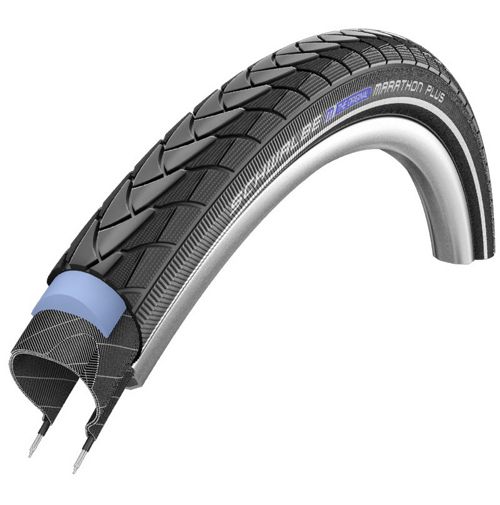
For most commuters, the Marathon is almost puncture-proof throughout its lifespan, unless you’re really unlucky. Schwalbe uses a thicker and more durable rubber with a SmartGuard layer underneath to provide maximum protection against punctures and cuts.
Mileage-wise, you’re probably looking at around 10,000mi/16,000km before it starts even to show any signs of wear. It’ll easily last you more than 12 months, at the minimum.
The Schwalbe Marathon comes in sizes ranging from 25C all the way to 35C, which will fit most commuter bikes.
- Pros : Very durable and will last you a long time.
- Cons : Hard to install even for the clincher version.
Schwalbe G-One Speed
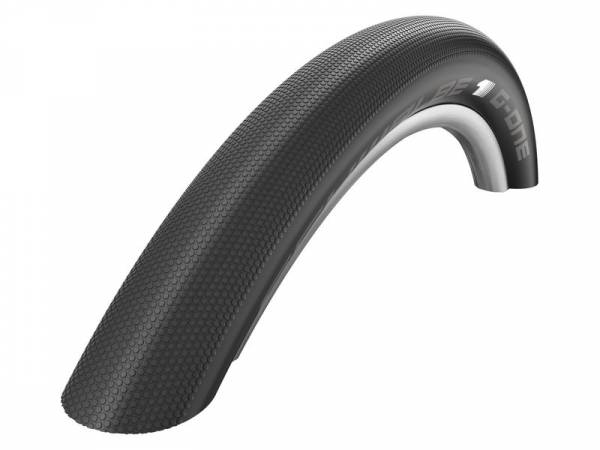
This is yet another popular pair of Schwalbe tires for commuting especially if you’re on a wider wheelset, commonly found on commuter bikes.
Simply put, it’s the faster and lighter version of the Schwalbe Marathon Plus at a slight expense in puncture protection properties.
The Schwalbe G-One Speed is available in 30C, 35C, and 38C sizes. With this, you can run a lower pressure, and the wide tire will absorb most, if not all, of the bumps across both asphalt and gravel surfaces.
- Pros : Available in wider sizes up to 38c.
- Cons : Don’t grip well in the wet.
Continental Contact Speed
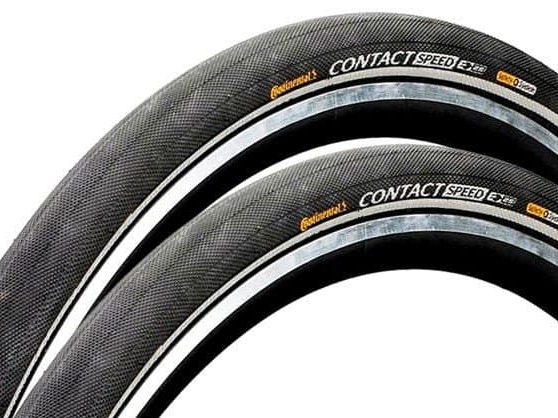
If there’s any tire developed for city riding in mind, the Continental Contact Speed is the answer. It’s an improved version over its hugely popular predecessor, the Sport Contact 2 City.
Continental has made significant improvements in the compound, making it even more grippy for the city’s road surfaces. This new compound is able to change the tire shape according to the load and the road surface.
A new puncture protection belt called SafetySystem Breaker, which is Kevlar reinforced is also added. Sizing starts from 28C for the Continental Contact Speed and goes all the way up to 32C and 37C.
- Pros : Excellent grip even on wet surfaces.
- Cons : Not available in sizes below 28c.
WTB ThickSlick Flat Guard
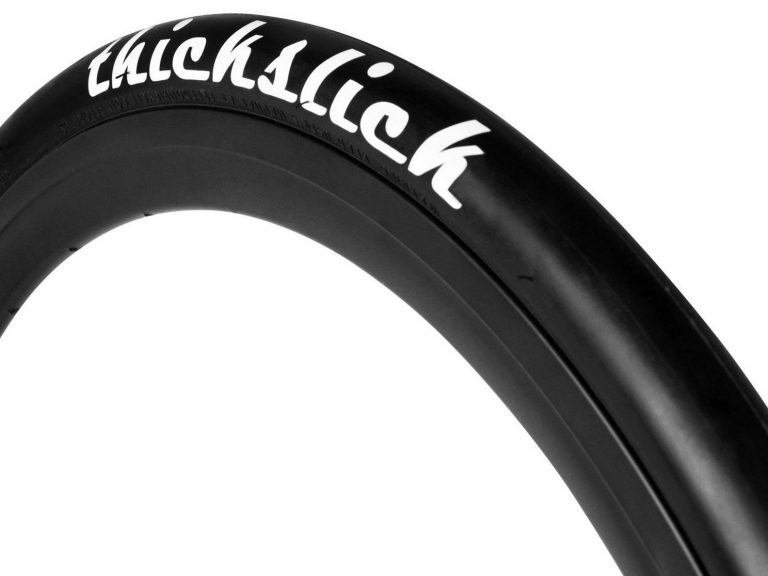
You can spot this tire from some distance away with its huge logo printing and the tire’s bulbous shape.
The WTB ThickSlick is a pure urban riding tire that can handle everything a city road can throw at you. It uses double the rubber treads that give you plenty and plenty of miles before ever needing to change them. Further to that, the middle section is also 1.5mm thicker.
The WTB Thick Slick comes in 3 sizes, 23C, 25C, and 28C.
- Pros : Excellent puncture protection properties.
- Cons : Slick threads might not instill confidence in some.
Frequently Asked Questions
1. How long can the tires last?
They generally last between 2000mi/3200km to 5000mi/8000km.
The distance depends on various factors such as the type of compounds, road conditions, and the rider’s weight.
Racing tires such as the Vittoria Corsa G2 or the Continental GP5000 will not last as long as more durable ones such as the Continental GP 4 Season or Michelin Power All Season.
2. Will swapping my front and rear tires prolong its life?
Swapping your front and rear tires will prolong their lifespan.
You’ll notice that the rear tire wears out quicker than the front. That’s because most of the weight on the bike is distributed at the rear.
On the other hand, some would argue that you risk losing grip during fast descends if you swap your front and rear tires. The front tire (previously rear) will have fewer threads and hence less grip, increasing the probability of sliding off during cornering.
For safety reasons, it’s better to wear out the rear tire completely. Then buy a new one and have it installed on the front. The old front tire goes to the rear.
3. How do I know when to replace my bike tires?
Some models like the Continentals GP4000 S2 have Tire Wear Indicators on them. There are 2 holes on the tires and when they disappear, you know it’s time to change.
But don’t worry if your tires don’t have a wear indicator. You can also do that visually and look out for certain signs on the road contact patch :
- A lot of small cuts and grazes
- A flattish rather than curved contact patch
- Small crack lines
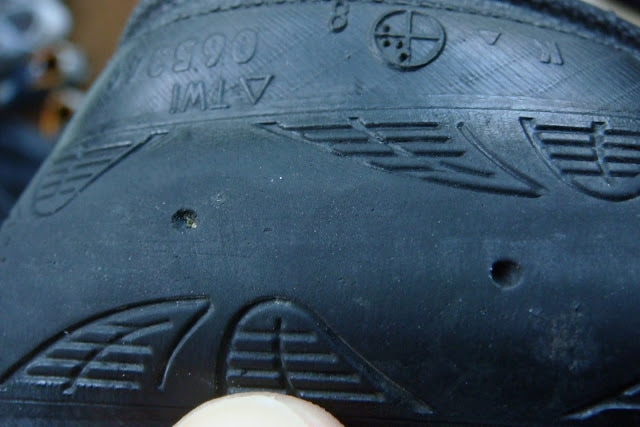
4. What tire pressure should I use?
This is a popular question that attracts varying replies.
Some swear by having 7.5bar/110 for all their tires on all occasions, while some use different pressure depending on the riding conditions.
Read More : The 7 Factors that Affect Your Bike Tire Pressure
I certainly fall into the second category. Here are a few things I’d take into consideration:
- Tire Width. I run about 20% lower pressure as I go up a size. If I run 7.5bar/110psi on 23mm tires, I’ll only run 6.2bar/90psi on 25mm tires.
- Road Conditions. I run about 10 to 15% lower pressure on a wet day.
- Weight Distribution. Our weight on the bike is distributed approximately 40/60 for Front/Rear and my tire pressure reflects that accordingly. Running a lower front tire pressure allows for a more comfortable ride on uneven roads.
You can also use the table below from Vittoria as a guideline or SRAM’s online tire pressure calculator.
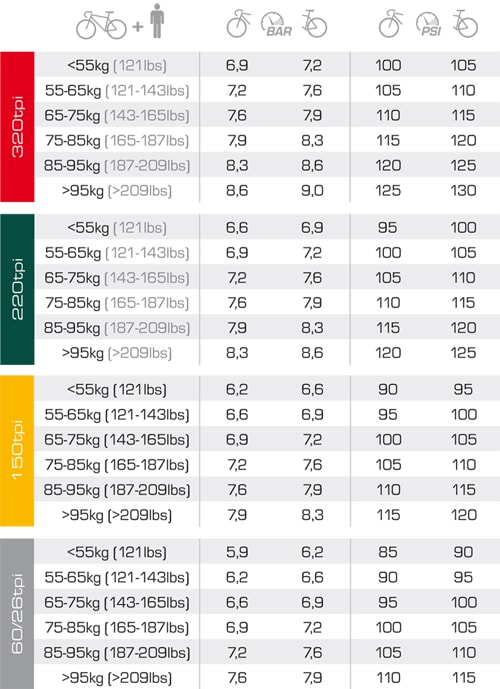
5. What does the numbers printed on the sidewall mean?
If you look closely enough at the sidewall, you’ll notice a set of numbers printed on it. Some are straightforward, while some aren’t.
Let me break them down for you.
- Min and Max Air Pressure. The general rule of thumb is to stick within the recommended air pressure range. Too high and you’ll risk a blowout while you’ll risk getting pinch flats if you’re running below the recommended pressure. If you’re running a carbon clincher rim, follow the recommended air pressure range of your rims instead.
- ETRTO Nomenclature. These are only applicable for clincher tires. It’s a way for tire and rim manufacturers to standardize the tire and rim sizes to ensure a safe fit for the tires. You’ll come across numbers like 25-622 (700x25C) or 28-622 (700x28C) or something similar. 700 represents the tire width while 25C represents the bead-seat diameter. All measurements are in mm. ETRTO recommends that the tire must be larger than the internal rim width to reduce the chances of the tires coming off the rims especially at high air pressures.
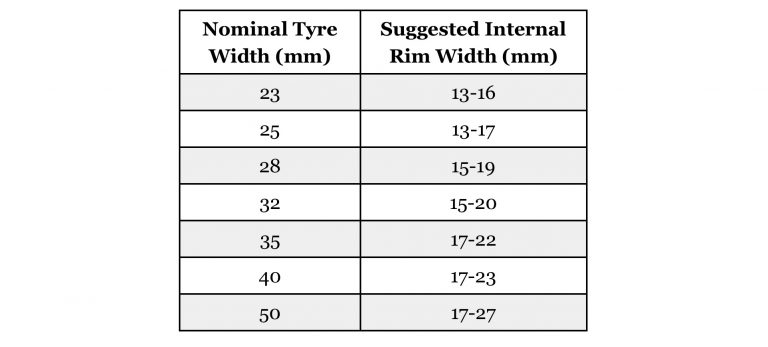
6. Are the tires directional?
Yes the majority of them are except the ones without any thread.
The direction is usually printed on the sidewall with a small arrow. Have a good look at them otherwise you might miss it.
Alternatively, the direction of how the threads are printed will also give you an indication of the directions.
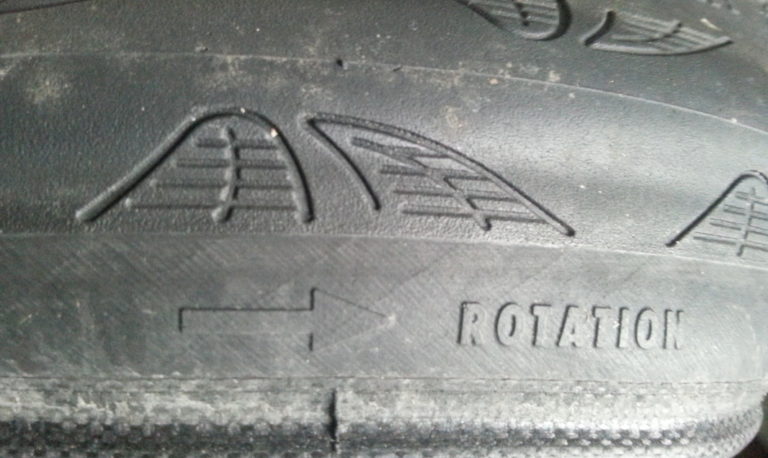
7. What tire width should I use?
The ideal tire width is the one that suits your rim width and has enough clearance for your bike frame.
Here’s how to determine them.
Firstly, check whether your bike frame has enough clearance for the tire width you intend to use. All bike frames have enough clearance for 23mm tires.
Post-2016 models can usually take up to 25mm tires and endurance road bikes can generally take up to 28mm.
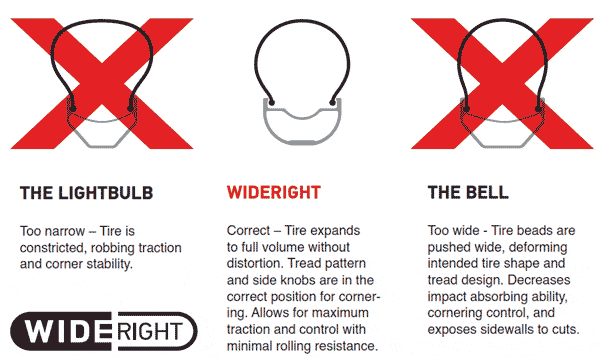
Secondly, check the rim width.
Newer rims (post-2016) can take 25mm and above tires without having the lightbulb effect, leading to pinching flats and hampering the bike handling.
Author Recommended Reads
